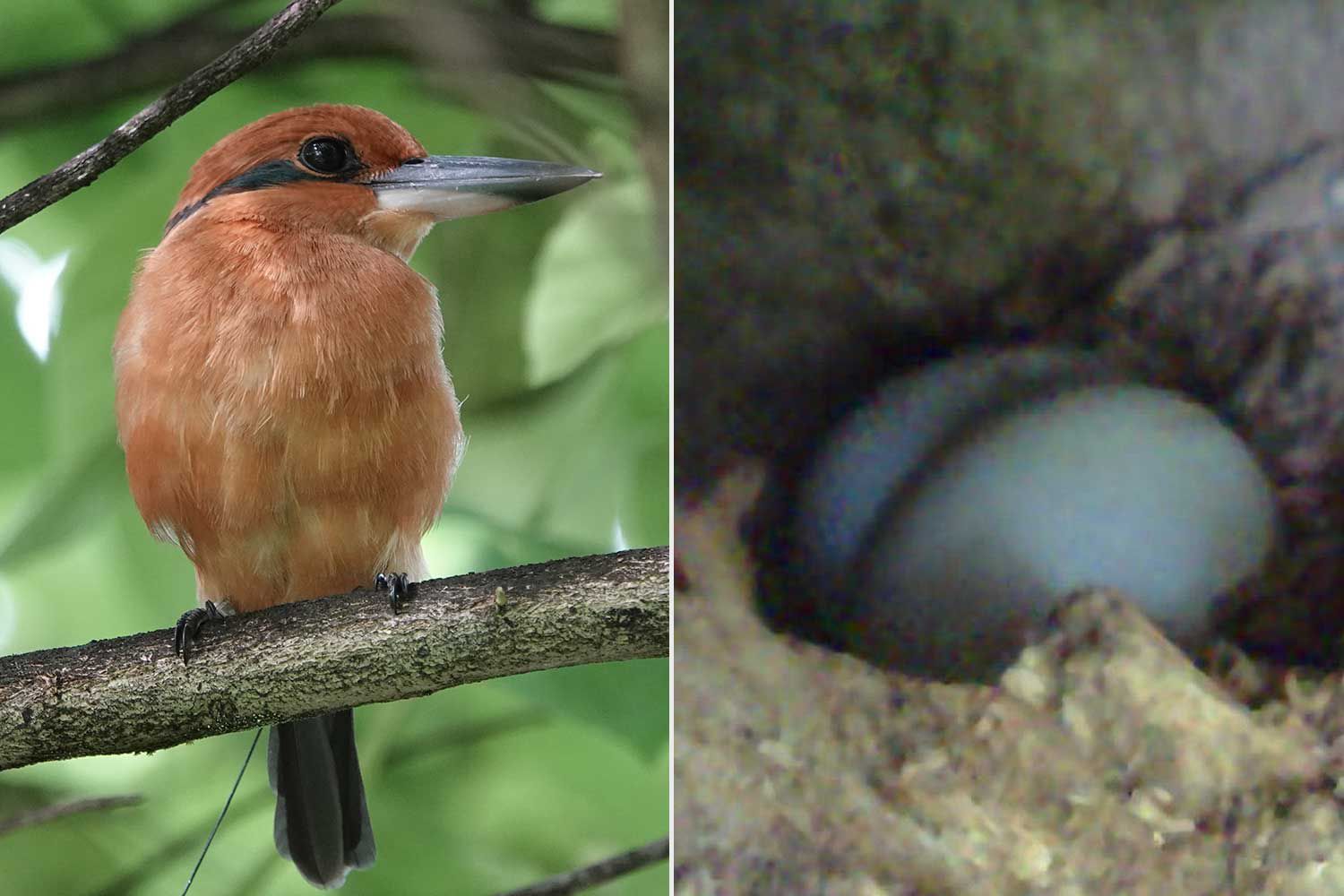Physical Address
304 North Cardinal St.
Dorchester Center, MA 02124
Physical Address
304 North Cardinal St.
Dorchester Center, MA 02124

:max_bytes(150000):strip_icc():format(jpeg)/Sihek-eggs-Palmyra-Atoll-Preserve-042225-32d5b5d7bf5d4684982fede090cedd59.jpg)
Once exterminated bird lays eggs in nature for the first time in almost 40 years.
Sihek, an now-scary bird that returned to nature in 2024, has laid wild eggs in its new home in Hawaii, according to media emissions from Zoological Society of London (ZSL) and Nature conservation (TNC). The bird species was previously explained by its original Ö Guam in the 1980s.
The Sihek Recovery program released nine young Sihek – four women and five men – at TNC’s Palmyra Atoll Preserve in Hawaii in September 2024. Zookeepers raised and nurtured the birds before being released through a global collaboration program among conservationists, including ZSL.
Jonny Shepherd/TNC-ZSL
Sihek Birds, also known as Guam Kingfishers, has adapted to his new home since they were released. Of the nine birds, eight have formed couples per ZSL and TNC. All four couples have since built nests, and three have laid eggs in nature for the first time since their species extermination.
Sihek Recovery Team Professor John Ewen from the ZSL Institute of Zoology noted the exciting news date in a statement. “Many of us spent this Easter weekend looking for high and low for eggs of another kind-and although they may not be as shiny or bright colored, said these little, unassuming eggs that are much more exciting and valuable than any of their chocolate chains,” said Ewen and called the eggs “a remarkable mileage for the decades
The London Zoo Bird Keeper Charlotte James, who helped to fire the birds, said: “After many long days last year and looked at these birds when they were only small eggs and chickens, it is so rewarding to see them start their journey towards raising their own chickens in the forests in Palmyra atoll.”
James continued to reflect on the journey and added, “It’s hard not to feel like a proud parent who sees them out there flourishing and doing history – and an honor to be part of the ongoing mission to bring Sihek back from the brink of extinction.”
TNC-ZSL
Never miss a story – register for People’s free daily newsletters Keeping up to date on the best of what people have to offer, from celebrity news to compelling stories of human interest.
According to TNC, their preserves were selected as a home for Wild Sihek because the site is predator -free and in a protected region.
TNC Senior Bird Conservation Specialist Kayla Baker said the discovery of the eggs “left us all with tears in our eyes.”
The birds were called Sihek by the indigenous population in Guam. The species was threatened when the brown tree storm was introduced to the island in the 1940s and the last wild Sihek was seen in 1988.
As the population decreased, biologists on the island began a conservation program program with 29 Sihek.
According to Smithsonian’s national zoo and preservationThe bird is medium -sized with a strong beak. It is known to be aggressive.
TNC-ZSL
As for the Bird’s Cultural Origins, Yolonda Topasña of the Guam Department of Agriculture Division of Aquatic and Wildlife Resources Said, “The Guåhan Sihek Continue to Etch the Story Upon Us, Marking Milestones With Tutuhan Again Argain. Now the First To Produce Eggs. Her Name Means Beginning, and She Showed Signs of Strength From The Beginning, Wanting to Feed herself before she is old enough to do so.
Martin Kastner/TNC-ZSL
But what’s next? ZSL and TNC stated that the paired couples may need test-and-errors time to learn how to raise their young people. The organizations said: “It is likely that it will take a few rounds of eggs that lay for the birds to hone their skills and hatch chickens.”
More young Sihek will be released on Palmyra Atoll in the summer.